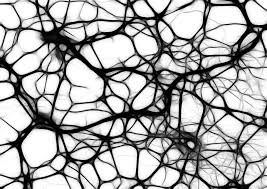Abstract
Almost all brain cells contain cilia, antennae-like microtubule-based organelles. Yet, the significance of cilia, once considered vestigial organelles, in the higher-order brain functions is unknown. Cilia act as a hub that senses and transduces environmental sensory stimuli to generate an appropriate cellular response. Similarly, the striatum, a brain structure enriched in cilia, functions as a hub that receives and integrates various types of environmental information to drive appropriate motor response. To understand cilia’s role in the striatum functions, we used loxP/Cre technology to ablate cilia from the dorsal striatum of male mice and monitored the behavioral consequences. Our results revealed an essential role for striatal cilia in the acquisition and brief storage of information, including learning new motor skills, but not in long-term consolidation of information or maintaining habitual/learned motor skills. A fundamental aspect of all disrupted functions was the “time perception/judgment deficit.” Furthermore, the observed behavioral deficits form a cluster pertaining to clinical manifestations overlapping across psychiatric disorders that involve the striatum functions and are known to exhibit timing deficits. Thus, striatal cilia may act as a calibrator of the timing functions of the basal ganglia-cortical circuit by maintaining proper timing perception. Our findings suggest that dysfunctional cilia may contribute to the pathophysiology of neuro-psychiatric disorders, as related to deficits in timing perception.
Introduction
Primary cilia, antennae-like microtubule-based organelles emanating from the cell surface, function as a signaling hub that senses environmental sensory stimuli and transduces them to generate appropriate cellular responses [1,2,3,4]. As an essential center for non-synaptic neuronal communications, cilia signaling is achieved through specific receptors and downstream pathways’ components such as the Sonic Hedgehog (Shh) signaling pathway, G-protein-coupled receptors (GPCRs), and ion channels [5,6,7,8,9,10,11,12].
Cilia’s dynamic structure, reflected by the vibrant length, morphology, and protein composition, allows cilia to quickly respond to environmental stimuli such as light, mechanical stimuli, pH, and chemical signals (signaling molecules, neurotransmitters, and nutrients) [13,14,15,16,17,18,19]. Although most ciliopathies are associated with cognitive impairments, cilia have only been scarcely investigated for their roles in higher-order cognitive functions [20,21,22,23,24,25]. We recently showed dysregulations of genes associated with cilia’s structural and functional components in four psychiatric disorders: schizophrenia, autism, bipolar disorder, and major depressive disorder [26]. Furthermore, many dysregulated cilia genes overlapped across these psychiatric disorders, indicating that common cilia signaling pathways’ dysfunctions may underlie some pathophysiological aspects of these psychiatric disorders.
Like cilia, though at larger spatial and organizational scales, the striatum, which comprises the primary input station to the basal ganglia, functions as a hub receiving and integrating various environmental information, including contextual, motor, and reward [27,28,29,30,31]. Striatal neurons process the information and project to the output structures of the basal ganglia, substantia nigra pars reticulata (SNr)/medial globus pallidus (GPm) (for review [32,33,34,35]). The striatum is enriched in cilia [36, 37]. Furthermore, a number of cilia-associated GPCRs are expressed in the striatum (e.g., dopamine receptors, serotonin receptor 6 (5-HT6), melanin-concentrating hormone receptor 1 (MCHR1), and the orphan receptors GPR88) [5,6,7,8,9,10, 38,39,40,41,42,43,44,45,46,47,48,49,50,51,52,53,54,55,56].
As a central part of cortico-basal ganglia-thalamic-cortico circuits, the striatum controls various executive functions, including motor movements, planning, decision-making, working memory, and attention [57,58,59,60]. Dysfunctions of cortico-basal ganglia-thalamic circuits are involved in several neurological and psychiatric (neuro-psychiatric) disorders such as attention-deficit hyperactivity disorder (ADHD), Huntington’s disease (HD), Parkinson’s disease (PD), schizophrenia (SCZ), autism spectrum disorder (ASD), Tourette syndrome (TS), and obsessive–compulsive disorder (OCD) [61,62,63,64,65,66,67,68,69,70,71,72,73,74,75,76]. The overlap in clinical features of these disorders suggests common signaling pathways that may underlie some pathophysiological aspects of these neuro-psychiatric disorders. Hence, it is tempting to ask whether cilia in the striatum mediate some of its functions and whether cilia are involved in psychiatric disorders associated with striatum dysfunctions.
According to our recent study, the striatum was the only brain structure that shared rhythmic cilia genes with every other brain region studied [18]. The spatiotemporal expressions of circadian cilia genes in the basal ganglia-cortical neurons follow the same sequential order of this circuitry in controlling movement, though on different time scales. Therefore, this study aims to examine the behavioral consequences of cilia ablation in the striatum and explore whether abnormal striatal cilia are a unifying pathophysiological factor in striatum-associated neuropsychiatric disorders. For this purpose, we used the loxP/Cre conditional deletion system to selectively delete the intraflagellar transport (IFT88) gene, an essential factor for primary cilia formation, from the dorsal striatum. We then monitored the behavioral phenotypes resulting from striatal cilia ablation, focusing on neuropsychiatric phenotypes/manifestations of the striatum functional domains.
Material and Methods
Animals
The Ift88fl mice possess loxP sites flanking exons 4–6 of the intraflagellar transport 88 (Ift88) gene (Jackson Laboratories, #022,409). All experimental procedures were approved by the Institutional Animal Care and Use Committee of the University of California, Irvine, and were performed in compliance with national and institutional guidelines for the care and use of laboratory animals. The experimental design is illustrated in Fig. 1a. Only male mice were used in this study….







